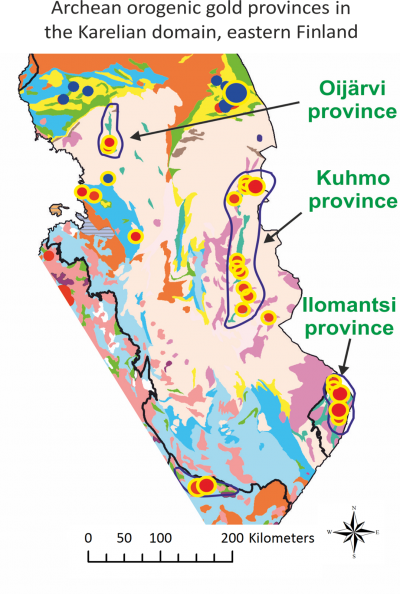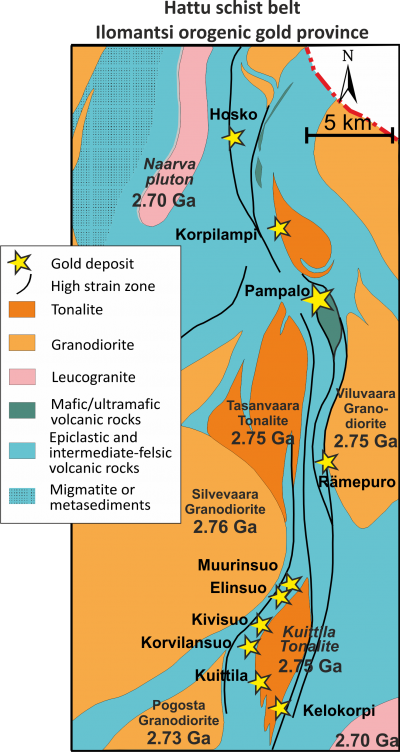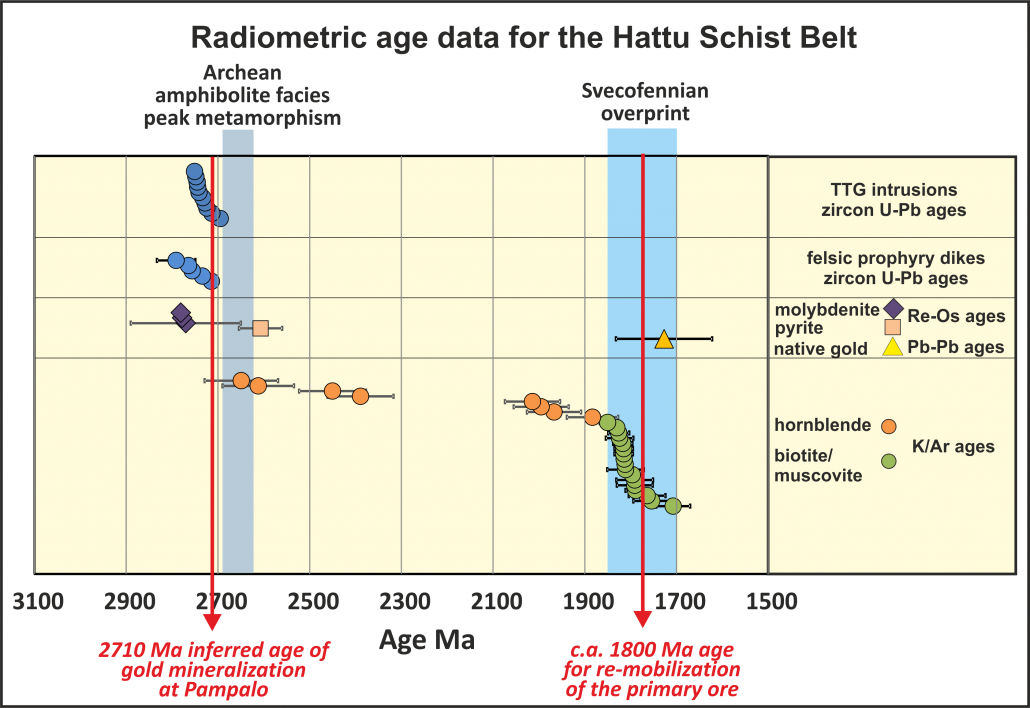
The easternmost part of the Archean Karelian Province in eastern Finland (e.g. Ilomantsi Complex) belongs to the Central Karelia sub-province characterized by short Neoarchean crustal growth between 2.80-2.70 Ga. The rest of the Archean basement in Finland belongs to the Western Karelia sub-province where the ages of the oldest rocks are up to 3.5 Ga.
The major parts of the craton in eastern Finland mostly consist of 2.90-2.70 Ga tonalite-trondhjemite-granodiorite (TTG), 2.75-2.72 Ga sanukitoid, 2.71-2.69 Ga granodiorite-granite-monzonite (GGM), 2.90-2.70 Ga paragneiss complexes, as well as greenstone belts with mafic-ultramafic volcanic rocks and sediments of 2.95-2.75 Ga ages. These complexes and belts suffered lower amphibolite to granulite facies peak metamorphism between 2.68-2.62 Ga.
Orogenic gold deposits in the Archean basement of the Karelian domain are confined to the north-south trending greenstone belts and forms three major metallogenic provinces, e.g. Ilomantsi, Kuhmo and Oijärvi provinces. Direct dating of gold deposition in these provinces are lacking. However, due to the exploration and mining interest, the geochronological database allows to infer the most probably timing of formation of orogenic gold deposits in the Ilomantsi province.

In the strongly mineralized Hattu schist belt (Ilomantsi province), the emplacement of 2.76-2.71 Ga syntectonic tonalite-granodiorite intrusions and felsic porphyry dikes was associated with Mo-W-Au mineralization and subsequent gold deposition along the major shear zones. U-Pb zircon data from mineralized felsic dikes at the Pampalo deposit suggest 2.71 Ga for the gold mineralization event. The hydrothermal zones were recrystallized and deformed under upper greenschist-lower amphibolite facies conditions which confirms that formation of orogenic gold deposits took place prior to the 2.68-2.62 Ga peak metamorphism.

The Archean basement of eastern Finland was also affected by Paleoproterozoic deformation and upper greenschist-lower amphibolite facies retrograde metamorphism during the Svecofennian orogeny at around 1.80 Ga. This overprint is reflected by the Proterozoic ages of Archean rock forming amphibole, biotite and muscovite obtained by K-Ar and Ar-Ar dating methods.


Pb isotope data indicate that the c.a. 1.8 Ga Svecofennian overprint modified the primary mineralization and re-mobilization and re-deposition of ore and alteration minerals occurred in the Hattu schist belt. Due to the regional effect of the Svecofennian orogeny on the Archaean basement, the overprinting processes may also have had modified the Archean orogenic gold deposits in the Kuhmo and Orijärvi greenstone belts.
(Last update: 20.05.2020)